Himenòpters: Abelles
Família Apidae
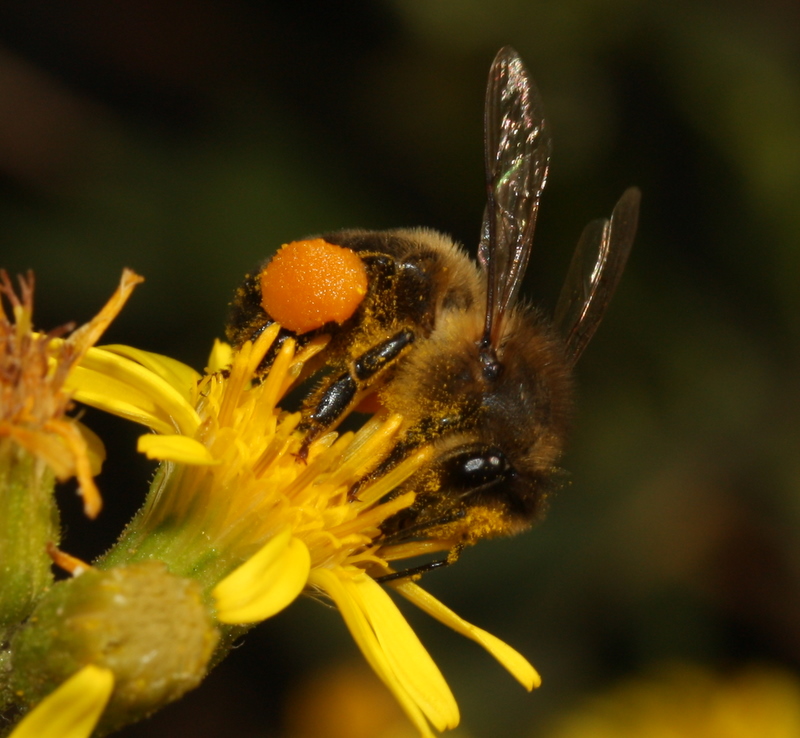

Gènere Anthophora
Són abelles grans de llengua llarga, amb el cos de color negre, arrodonit i robust. El pèl que les recobreix és de color marró o negre i dens. Tenen tres cel·les submarginals en la venació de les ales anteriors. Els mascles sovint tenen marques blanques o de color groc pàl·lid a la cara. Les femelles, en canvi, tenen uns pèls ben desenvolupats per transportar pol·len a la tíbia i els tarsòmers de les potes posteriors, però no tenen corbícula. Totes les espècies són solitàries, encara que de vegades poden nidificar formant agregacions. La majoria nien al terra, talussos del terreny o parets. Mentre visiten les flors volen molt ràpidament, fent un brunzit fort, i de vegades poden quedar com suspeses en l'aire mentre volen.
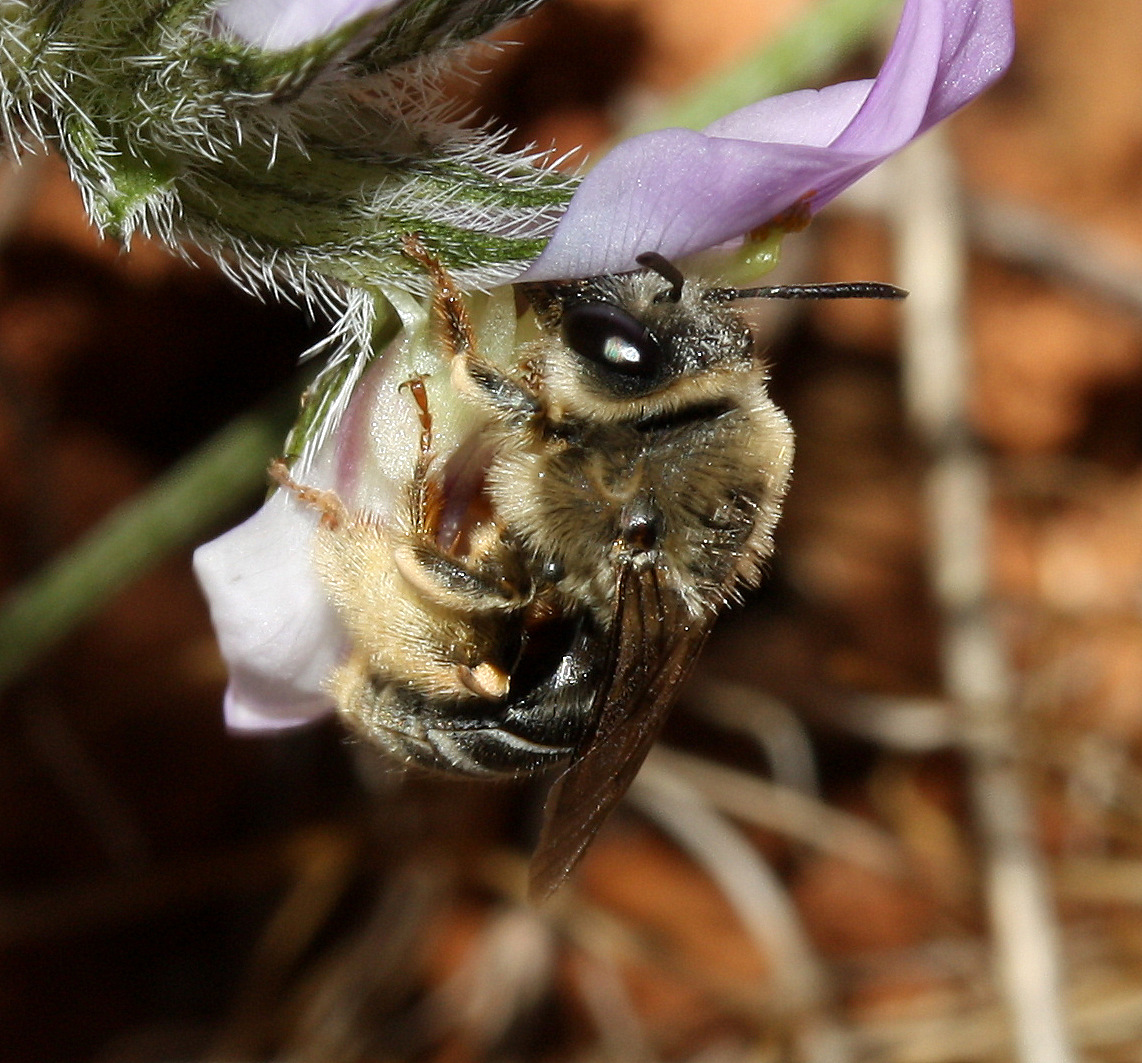
Gènere Apis
Només es troba una espècie d'aquest gènere a les Illes Balears, que és l’abella de la mel, Apis mellifera. Les abelles de la mel són abelles de mida mitjana amb un tòrax pelut de color marró pàl·lid, i un abdomen cilíndric i ratllat que varia en color des de taronja o marró a gairebé negre. Els ulls també estan recoberts per pèls curts. L'ala anterior es caracteritza per una venació on es distingeix una cel·la marginal llarga i prima amb els marges quasi paral·lels i tres cel·les submarginals, la primera amb quatre costats. El pol·len és transportat en una espècie de cistelles (corbícules) a les potes posteriors, que són àrees de la tíbia engrandides i aplanades envoltades de pèls. L’abella de la mel té el nivell de sociabilitat més complex que existeix en les abelles. Viuen en colònies permanents de milers d'individus. A la natura, els nius de les abelles mel·líferes sovint es troben en forats d'arbres o fissures de roques, i es componen de diverses bresques verticals i paral·leles formades per cel·les hexagonals de cera. Cada colònia està composta per una sola reina i la seva descendència. La reina és la femella que posa els ous, té un gran abdomen, s'aparella només una vegada i emmagatzema l'esperma. La reina passa la major part del temps posant ous a l'interior de les cel·les hexagonals de cera del niu. Els ous fertilitzats es converteixen en obreres o reines depenent de la dieta de les larves. Totes les larves són alimentades amb gelea reial durant els tres primers dies, però després les larves alimentades amb pol·len i mel es converteixen en obreres, i aquelles que continuen rebent gelea reial es converteixen en les noves reines. Les obreres són abelles femelles infèrtils i duen a terme les tasques principals de la colònia, com ara la recerca d’aliment, tenir cura de les larves, o la neteja, la construcció i la vigilància del niu. D'altra banda, els òvuls no fertilitzats es converteixen en abegots, que són mascles que tenen com a única funció la d’aparellar-se amb les noves reines. Els abegots són més amples i grans que les obreres, tenen ulls més grans i no tenen corbícules.
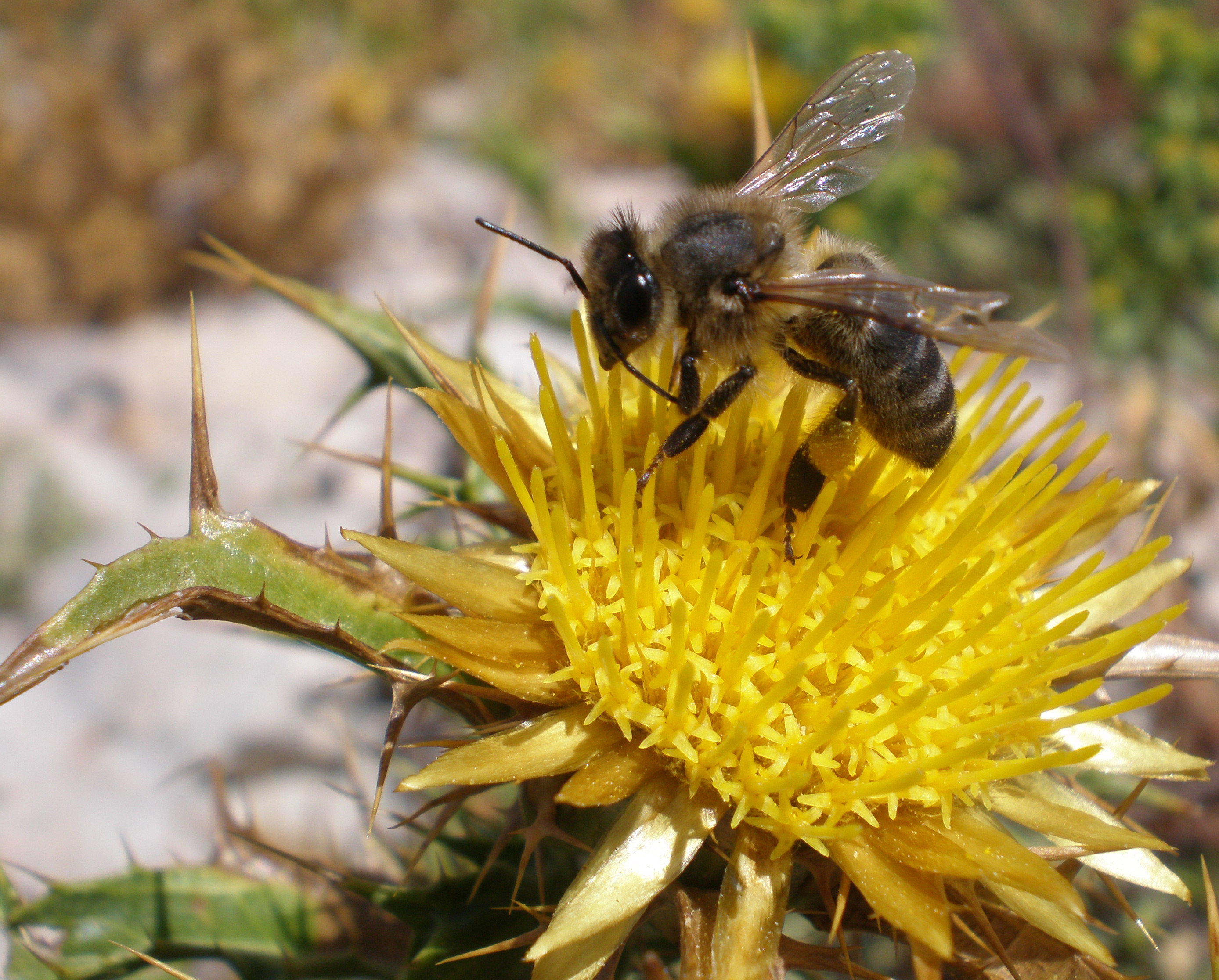
Gènere Bombus
Són els comunament anomenats borinos. Són abelles grans (11 - 25 mm) de llengua llarga, amb cossos negres arrodonits i densament coberts per pèls llargs i suaus que formen bandes de colors contrastants en el tòrax i l’abdomen (ex. bandes de color groc, negre, blanc o vermell). Els patrons de bandes de color poden ajudar a distingir les diferents espècies. Les femelles tenen una corbícula ben desenvolupada a la tíbia de les potes posteriors, on amunteguen el pol·len humitejat amb nèctar. Són abelles eusocials i viuen formant colònies de diversos centenars d'individus. El seu cicle de vida és anual, en general s’estén de la primavera a la tardor amb diverses generacions durant aquest període. Les reines passen l'hivern en cavitats sota terra i emergeixen a la primavera. S'alimenten del nèctar i el pol·len de les espècies de floració primerenca i comencen a construir el niu, que és com una cambra esfèrica, amb diversos materials vegetals. Sovint fan el niu aprofitant caus buits de petits mamífers, altres cavitats subterrànies o entre la vegetació densa. La reina construeix una petita cel·la amb cera secretada per les seves glàndules abdominals i l'omple amb nèctar regurgitat del qual s’alimentarà durant la incubació de la posta. A prop posa ous en una altra cel·la acompanyats d’una massa de pol·len i els incuba. La primera progènie són obreres que l’ajudaran a construir més cel·les, netejar el niu i alimentar a les larves amb pol·len i nèctar regurgitat. La colònia segueix creixent amb diverses generacions d’obreres. Abans que acabi la temporada, mascles i noves reines neixen i s'aparellen. Al final de la temporada la colònia es desintegra, la reina vella, les obreres i els mascles moren, mentre que les noves reines fertilitzades surten a cercar bons llocs per hibernar. Els borinos són pol·linitzadors importants, fins i tot en climes ennuvolats i freds. Hi ha tres espècies de Bombus citades a les Illes Balears: B. terrestris –la més comuna en totes les illes - B. pascuorum i B. lapidarius.
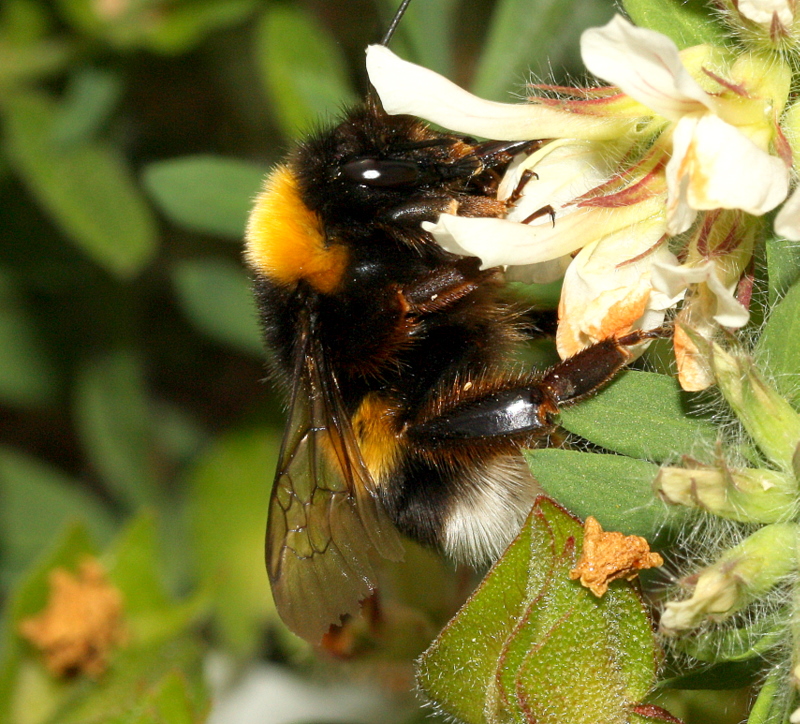
Gènere Eucera
Són abelles solitàries de llengua llarga i mida mitjana o gran. Els mascles es reconeixen fàcilment per les seves antenes extremadament llargues, que poden ser tan llargues com el seu propi cos. Les femelles, per contra, tenen un aspecte similar al de les Anthophora, però tenen dues cel·les submarginals en la venació de les ales anteriors en lloc de tres. En general, presenten el cos negre recobert per abundants pèls daurats, groguencs, marrons o taronges, de vegades formant bandes a l'abdomen. D'altra banda, les femelles tenen pèls per transportar pol·len ben desenvolupats a la tíbia i els tarsòmers de les potes del darrere. Construeixen nius subterranis, sovint formant denses agregacions.
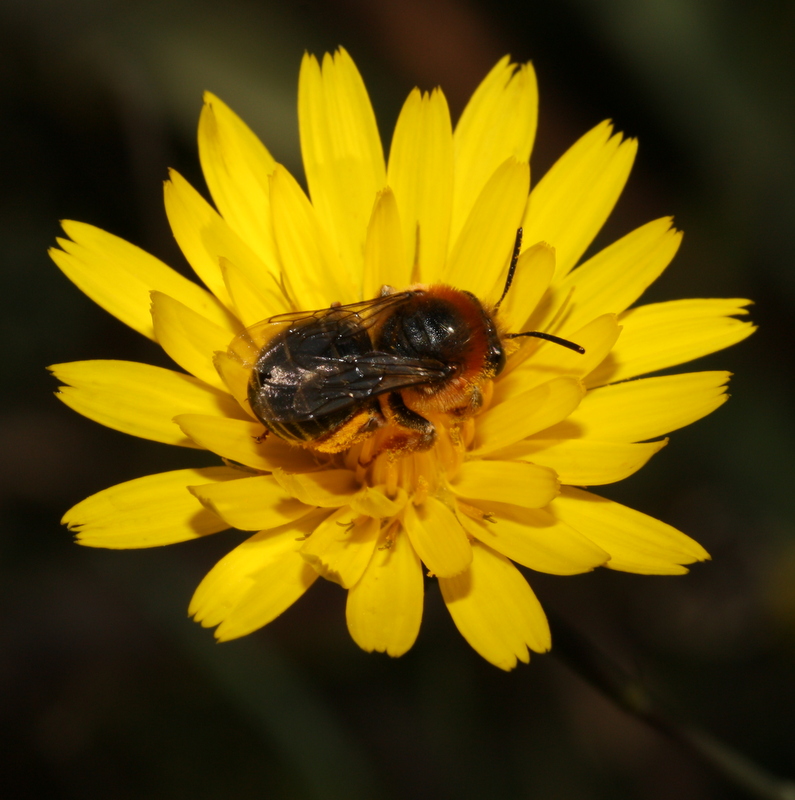
Gènere Nomada
Aquest és un gènere d'abelles cleptoparàsites, els seus hostes habituals són espècies del gènere Andrena. Són abelles de mida petita o mitjana que pareixen vespes. En general, el seu cos és allargat i sense pèls, amb bandes i taques de color groc, vermell o negre brillant. Les femelles ponen els seus ous a la paret del niu d'altres abelles quan aquestes no hi són. Quan les larves de Nomada eclosionen, maten l'ou o larva de l’espècie hoste amb les seves fortes mandíbules i s'alimenten del pol·len i el nèctar que hi ha emmagatzemat al niu que han envaït.